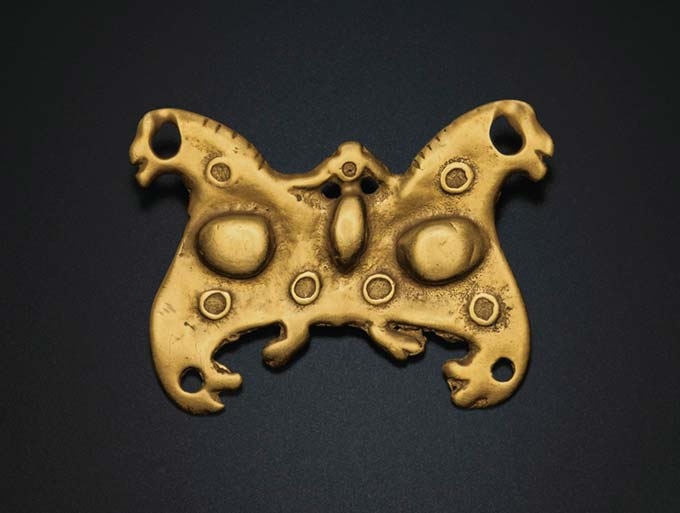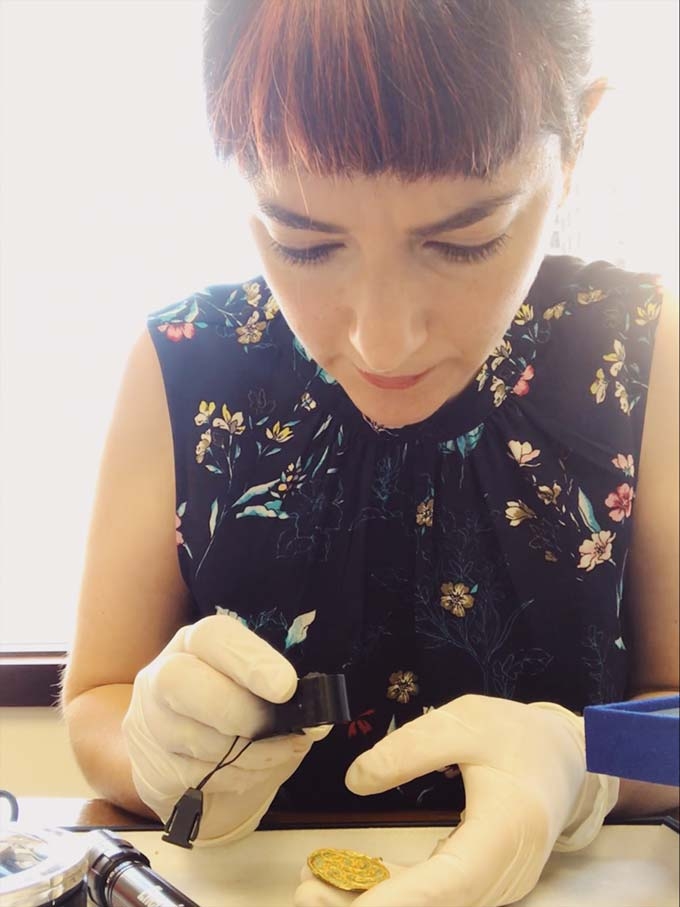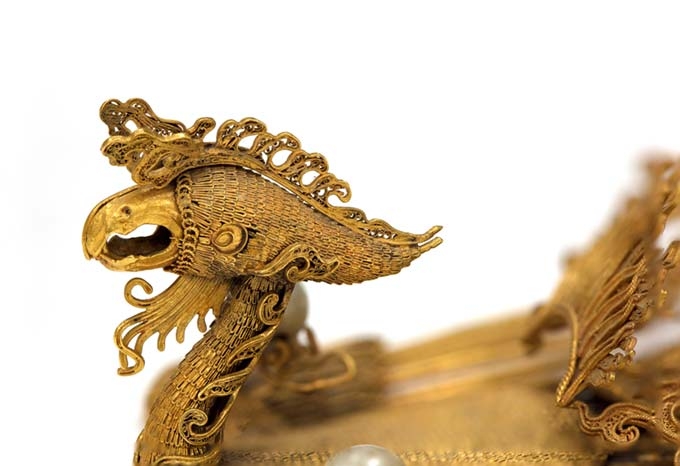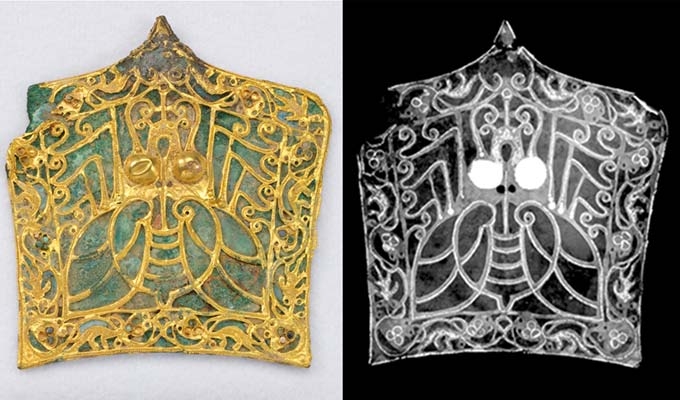Lost Luxuries: Ancient Chinese Gold
–
About 2,500 years ago, Chinese craftsmen started experimenting with goldsmithing, combining foreign techniques with their own local imagery and styles. In the centuries that followed, gold ornaments and vessels became potent communicators of economic status, official rank, gender norms, religious affiliation, and group identity. In the early twentieth century, art collectors across the globe recognized their beauty and historical importance and went to great lengths to obtain them.

Xianbei plaque, Northeast China, probably Western Jin dynasty (265–316 CE), gold, width: 2 7/8 inches, 41.6 grams. Collection of Middlebury College Museum of Art, purchase with funds provided by the Christian A. Johnson Memorial Fund, 2019.
This exhibition explores the artistry and social meanings of Chinese gold objects produced between the Warring States period (475–221 BCE) and Tang dynasty (618–907 CE), as well as the more recent story of how they entered American museum collections. The ancient artifacts are accompanied by innovative digital features that bring to life recent excavations, traditional goldsmithing techniques, and the lives of the diverse artisans who created them.
Virtual Tour of Lost Luxuries
While the exhibit is no longer on view to the public, you can take a virtual tour of the gallery below, or you can view the installation on ThingLink.
Related Events
Wednesday, February 19
Lost Luxuries: Ancient Chinese Gold
Lecture and Opening Reception
Time: 4:30pm
Location: Mahaney Arts Center, Room 125 and Lower Lobby
Sarah Laursen, Curator of Asian Art
In ancient China, gold ornaments were potent symbols of official rank, gender, group identity, and economic status; by the early twentieth century, they were sought after by art collectors for their beauty. Join Sarah Laursen, Curator of Asian Art and Assistant Professor of History of Art and Architecture, for a lecture about the little-known history of early Chinese gold, followed by a reception with light refreshments in the Lower Lobby.

Photo: Sarah Laursen
Tuesday, February 25
Secrets of Ancient Goldsmiths Demystified
Illustrated Lecture
Time: 4:30pm
Location: Mahaney Arts Center, Room 125
Jeanette K. Caines
Ancient jewelers made astounding works of art, unrivalled in modern times, without the benefit of electricity or modern equipment of any kind. How did they do it? Join Jeanette K. Caines, master goldsmith and director of Jewelry Arts Inc., for a lecture on ancient goldsmithing techniques.

Photo: Jeanette K. Caines, courtesy of The Metropolitan Museum of Art
Tuesday, March 10
Ancient Asian Gold Technology
Illustrated Lecture
Time: 4:30pm
Location: Mahaney Arts Center, Room 125
Donna Strahan
Unique among Asian art materials, gold is both a color and an artistic medium. Donna Strahan, Head of Conservation and Scientific Research at the Freer|Sackler Galleries of Art, Smithsonian Institution, investigates materials and methods of manufacture of Asian gold objects.

